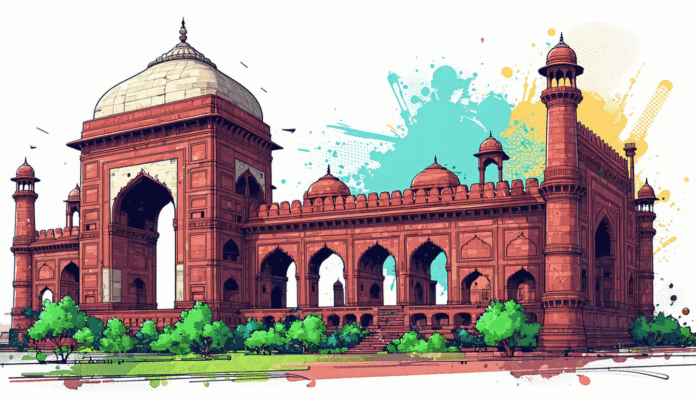In recent months, the phenomenon of “fak fik” has captured widespread attention across India, emerging as a significant cultural and social trend. From urban centers to rural communities, this unique movement—often described as a blend of creative expression and digital innovation—has sparked debates, inspired creators, and influenced industries. This article delves into the latest updates on fak fik in India, exploring its rapid rise, societal impact, and what lies ahead for this intriguing trend. Stay tuned as we uncover the forces driving fak fik’s popularity and its broader implications.
The Rise of Fak Fik in India
Fak fik, a term coined to represent a fusion of traditional Indian storytelling with modern digital platforms, has seen an unprecedented surge in 2023. According to a recent survey by Digital India Insights, over 15 million users engaged with fak fik content on social media platforms like Instagram and YouTube in the past six months alone. This growth is largely attributed to the accessibility of smartphones and affordable internet, which have empowered creators from diverse backgrounds to share their narratives.
The trend began gaining traction in early 2022, with short-form videos showcasing local folklore and contemporary issues. Today, it has evolved into a full-fledged movement, with creators hosting live events and collaborating with brands. The numbers speak for themselves: fak fik-related hashtags have garnered over 500 million views on Indian social media platforms this year.
Why Fak Fik Matters to India’s Cultural Landscape
Beyond its viral appeal, fak fik serves as a bridge between generations, blending age-old traditions with modern sensibilities. Experts note that it provides a platform for marginalized voices to be heard. According to Dr. Anjali Sharma, a cultural anthropologist at Delhi University, “Fak fik is more than entertainment; it’s a digital archive of India’s diverse heritage, allowing young creators to reinterpret history for today’s audience.”
This movement has also caught the attention of policymakers and educators who see its potential to promote cultural awareness. In September 2023, the Ministry of Culture announced plans to integrate fak fik-inspired content into educational programs, aiming to engage students with their roots in innovative ways.
Economic Impact and Opportunities
The rise of fak fik has opened new avenues for economic growth, particularly in the creative and tech sectors. Small businesses and startups have capitalized on the trend by offering tools and services tailored to content creators. Data from the Indian Creator Economy Report 2023 indicates that the market for fak fik-related services could reach $50 million by 2025.
For individual creators, the financial rewards are significant. Many have turned their passion into full-time careers, earning through sponsorships and advertisements. However, challenges remain, including copyright issues and platform monetization policies that often favor larger accounts over emerging talent.
Key opportunities include:
– Brand collaborations for authentic storytelling campaigns.
– Development of apps and tools to enhance content creation.
– Government-backed initiatives to support rural creators.
Challenges and Controversies Surrounding Fak Fik
While fak fim has been celebrated for its inclusivity, it has not been without controversy. Some critics argue that the commercialization of cultural narratives risks diluting their authenticity. Others point to instances of misinformation spread through viral videos, raising concerns about regulation.
On the flip side, supporters emphasize that fak fim empowers individuals to reclaim and redefine their stories. Striking a balance between creative freedom and ethical responsibility remains a key challenge for stakeholders. As discussions continue, platforms are under pressure to implement stricter guidelines without stifling innovation.
Future Outlook for Fak Fik in India
Looking ahead, the trajectory of fak fim appears promising yet complex. Industry analysts predict that by 2025, over 30% of India’s online content could be influenced by this trend, driven by advancements in AI and augmented reality. These technologies could enable even more immersive storytelling experiences.
However, sustaining momentum will require collaboration between creators, platforms, and regulators to address ethical concerns. As Dr. Sharma notes, “The future of fak fim depends on nurturing talent while preserving the integrity of our shared narratives.” The coming years will likely shape whether this movement becomes a lasting cultural force or a fleeting digital fad.
In conclusion, fak fim stands as a testament to India’s ability to innovate while honoring its heritage. Its rapid rise reflects a deeper yearning for connection in an increasingly digital world. As it continues to evolve, this trend promises to redefine how stories are told and experienced across the nation.
Frequently Asked Questions (FAQs)
1. What exactly is fak fim?
Fak fim is a cultural and digital trend in India that combines traditional storytelling with modern platforms like social media, often through short videos or interactive content.
2. How did fak fim gain popularity in India?
It gained traction through accessible technology, affordable internet, and the creativity of young Indians who began sharing local stories online around 2022.
3. What are the economic benefits of fak fim?
It has created opportunities for creators, businesses, and tech startups, with projections estimating a $50 million market by 2025.
4. Are there any concerns associated with fak fim?
Yes, issues like cultural misrepresentation, misinformation, and commercialization have sparked debates about regulation and authenticity.
5. What is the future of fak fim in India?
Experts believe it could shape online content significantly by 2025, especially with advancements in technology, provided ethical challenges are addressed.


